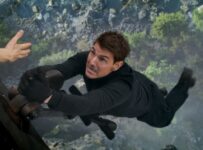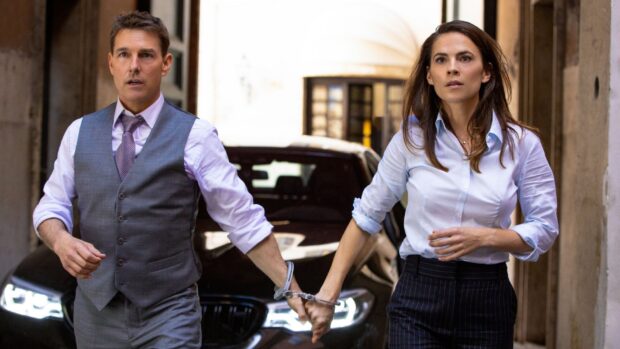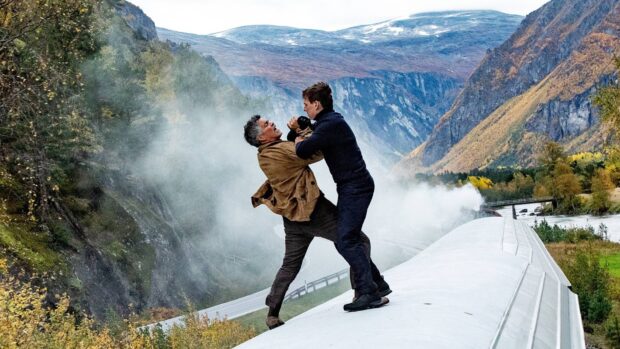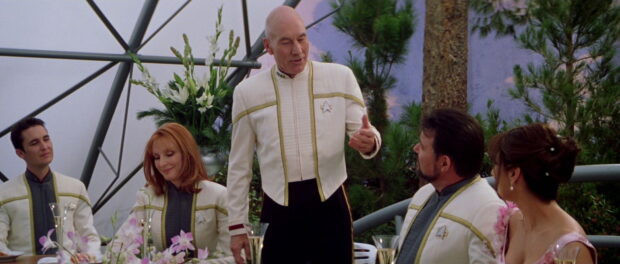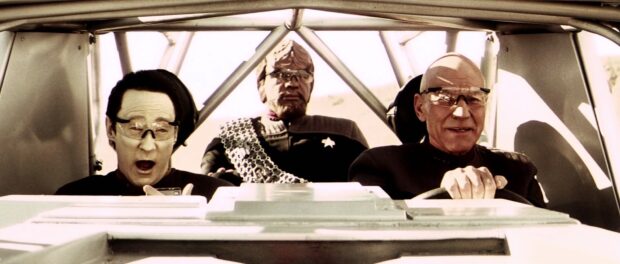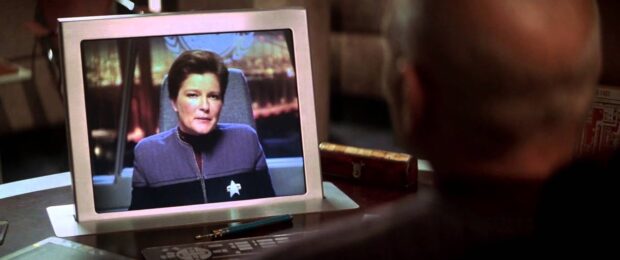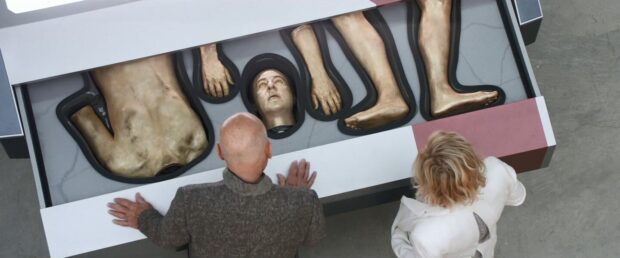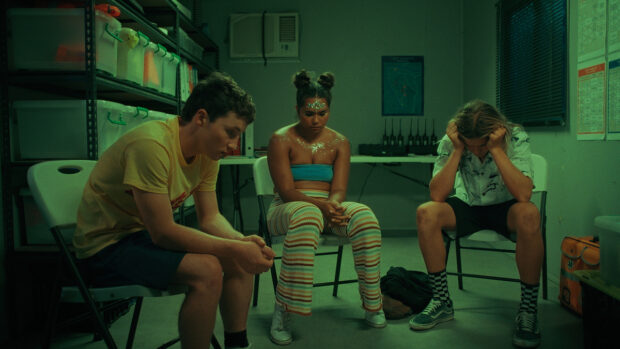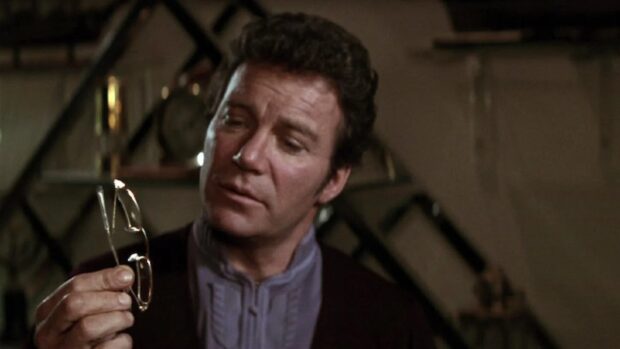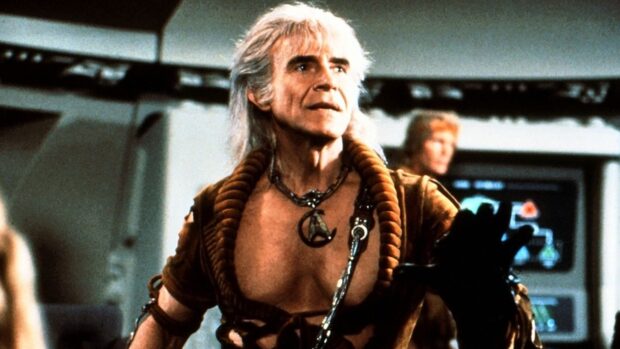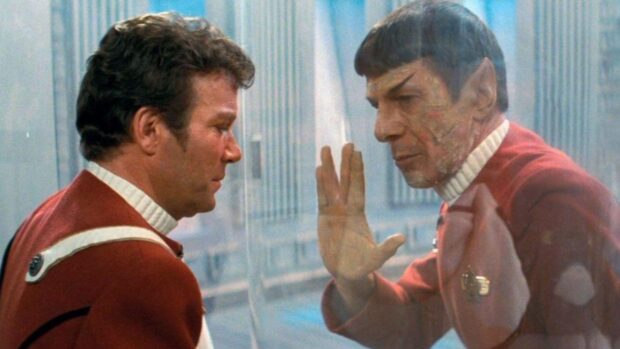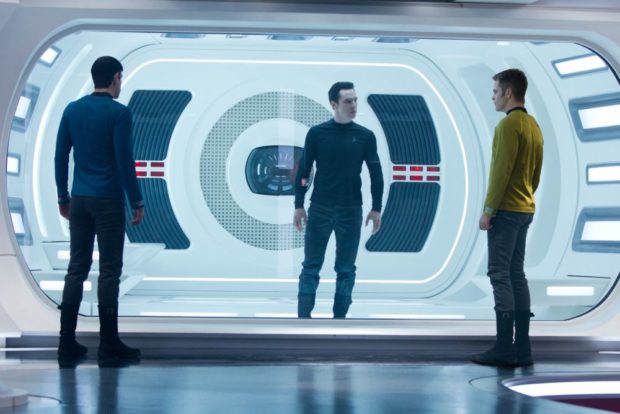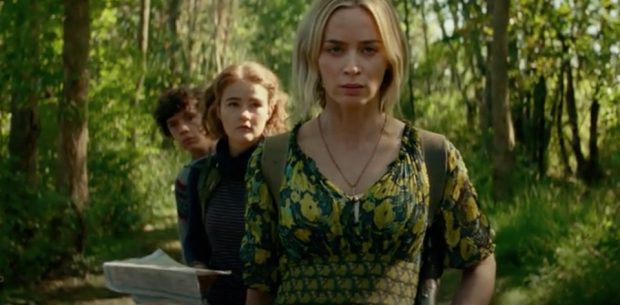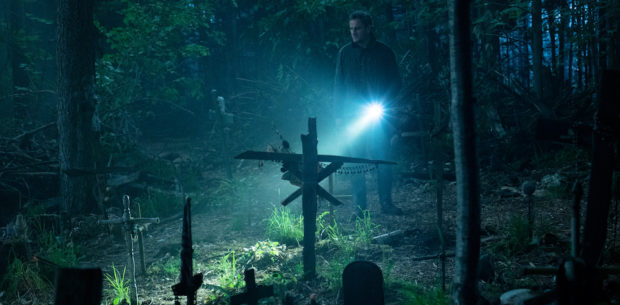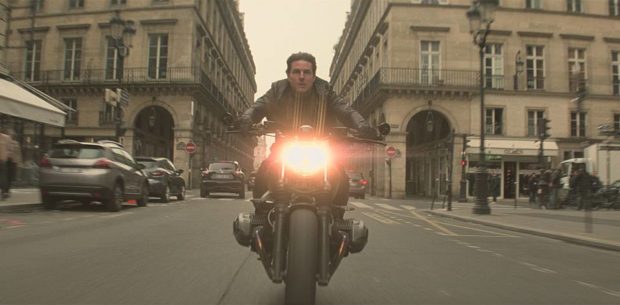If you’re of a certain age, it’s almost impossible to have escaped the phenomenon that is the Teenage Mutant Ninja Turtles. From the humble beginnings of Kevin Eastman and Peter Laird’s 1984 comic book series, designed as a riff on elements from popular superhero comics, their creations became part of the monocultural fabric.
In their first cinematic outing since the Michael Bay produced reboot series Teenage Mutant Ninja Turtles 2: Out of the Shadows (2016), TEENAGE MUTANT NINJA TURTLES: MUTANT MAYHEM attempts to restart the series again with an animated feature. Before you breathe a deep sigh of resignation, know that the creative team this time around includes The Mitchells vs. the Machines co-director Jeff Rowe and a writing collective that includes Seth Rogen, Evan Goldberg and the Detective Pikachu team.
In this version, Techno Cosmic Research Institute (TCRI) sends a squadron in the direction of scientist Baxter Stockman (voiced by Giancarlo Esposito) to obtain the secret to a mutagen he’s developed. In the ensuing scuffle, the mutagen (or “ooze”) leaks into the sewers. You probably already know that it finds its way to four baby turtles and a rat.
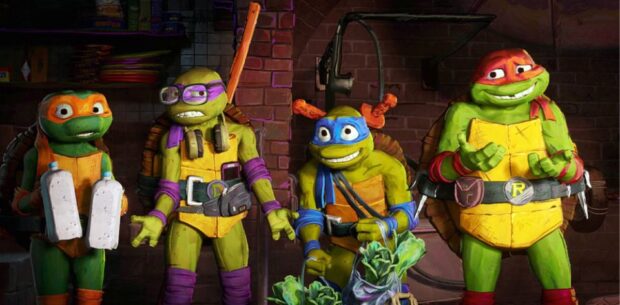
Fifteen years later, the four mutated turtles – Michelangelo (Shamon Brown Jr.), Leonardo (Nicolas Cantu), Raphael (Brady Noon) and Donatello (Micah Abbey) – have been raised by their adoptive mutated rat father, Splinter (Jackie Chan) to fight for themselves and fear the human world. Yet a chance encounter with teenage would-be reporter April O’Neil (Ayo Edebiri) sets them on the path of heroism, and ultimately against Stockman’s megalomaniacal mutant housefly, who now goes by the name Superfly (Ice Cube).
From the opening frames, it’s clear that the spirit of The Mitchells Vs. The Machines is infused into the ooze-filled DNA of this hyperkinetic and heartfelt piece of animation. Like Sony’s Spider-Verse series, it takes all of the pop culture it can digest and reimagines it through its own form of mutation, happily finding perfection in imperfection. Characters look hand-drawn and disproportionate, and quite deliberately so, giving the whole thing a sense of immediacy. Indeed, working with Mikros Animation, Rowe’s aim was to make it look and feel like concept art.
The film never stops moving either, with its painted designs wrapped around 3D models, squiggly lines that emanate from anything living, and a sketch-based vibe that looks as though entire objects have just been coloured in as they appear. During brief moments of pause, individual frames could have been lifted straight from the artwork of Eastman and Laird. The effect is remarkable, allowing for non sequitur humour and deeply emotional moments to populate the same scene. In other words, its DIY charm makes it feel all the more real.
Given that a sequel and two spin-off series have already been greenlit, TMNT: MUTANT MAYHEM allows these familiar characters to be reintroduced without trying to throw all the expected canon at the screen at once. Here’s a film that acknowledges the inherent outlandishness of the concept but never belittles anybody for digging on it. With obligatory credit stingers, ones that very much leave the door open for further adventures, Rowe and his crew have given us something very exciting to look forward to over the coming years.
2023 | USA | DIRECTOR: Jeff Rowe | WRITERS: Seth Rogen, Evan Goldberg, Jeff Rowe, Dan Hernandez, Benji Samit (based on characters created by Kevin Eastman and Peter Laird) | CAST: Micah Abbey, Shamon Brown Jr., Nicolas Cantu, Brady Noon, Ayo Edebiri, Maya Rudolph, John Cena, Seth Rogen, Rose Byrne, Natasia Demetriou, Giancarlo Esposito, Jackie Chan, Ice Cube, Paul Rudd, Austin Post, Hannibal Buress | DISTRIBUTOR: Paramount Pictures | RUNNING TIME: 100 minutes | RELEASE DATE: 2 August 2023 (US), 7 September 2023 (AUS)

